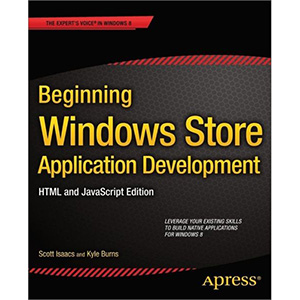haXe 2: Beginner’s Guide

haXe is the universal programming language that is completely cross-platform and provides a standard library that remains the same – regardless of platform.
haXe 2 Beginner’s Guide will get you up and running with this exciting language and will guide you through its features in the easiest way possible.
haXe has filled the gap in creating multi-platform applications, and haXe 2 Beginner’s Guide will fill the gap in learning all you need to know about haXe – even if it’s the first time you have heard of it.
This book will enable you to fully realize haXe’s potential for translating code from a haXe program into different languages.
Start with learning how to install haXe, work your way up to templating, and finally learn exactly how to make the same code work for multiple platforms. In between, find heaps of tricks and techniques and work with haXe’s typing system. Learn about inheritance, go from learning what a parameter is to creating your own parameterized classes, and find out what the fuss is all about regarding the dynamic type.
By the time you are done with this book, you’ll find yourself writing efficient haXe code for multiple platforms in less time than you can say “compatible”.
What you will learn from this book:
- Install haXe, get to know the community, and write your first program
- Declare classes and variables in haXe
- Learn about branching so that your program can make decisions and choose different paths according to conditions
- Iterate lists and get things organized into modules, packages, classes – the lot
- Learn about haXe’s typing system
- Learn features such as type inference and Dynamic objects
- Learn all there is to know about the famed Dynamic type
- Use and write interfaces, typedefs, and enums
- Learn to use templates in haXe to further enhance your web applications
Approach
This book is part of the Packt Beginner’s Guide series. Written in an engaging style, it offers step-by-step examples with screenshots at key steps and clear explanation of what is happening in each task.
Who this book is written for
This book is written for both Beginners and Developers who want to learn this multi-platform programming language to build web applications from scratch.
Book Details
- Paperback: 288 pages
- Publisher: Packt Publishing (July 2011)
- Language: English
- ISBN-10: 1849512566
- ISBN-13: 978-1849512565















This is a great book if you already have experience with OO-programming and would like to learn more about HaXe. It is very up to date and has a great introduction on all of the features that you will generally need. The syntax is described very well, and the examples are very to-the-point. No-nonesense HaXe goodness!
If you are an advanced HaXe developer, you may find that this book is a good reference. To my knowledge this book is the only up-to-date book on HaXe and I found out a couple of new handy things (or maybe things that I had just forgotten). However, the book does not contain a thorough description on Reflection and Types. The part about Generics could have incorporated multiple parameters and relations between them, but the basics are explained well. Also, I would personally have liked to know more about the Meta features, but this is not described in the book. But beginner’s probably don’t want to know details about this feature anyway.
When do you want to learn HaXe?
You want to learn this language if:
– you are a web developer (HaXe works extremely well as a ‘development turbocharger’ for specialized projects on a LAMP stack)
– you like the richness of features and the ease of deployment of PHP, but think that it generally lacks the best OO-features and prefer strictly-typed languages
– you like to learn a lot of languages in one go, and have them communicate with each other (via remoting)
– you like to explore new OO-features (generics, dynamics, reflection, rtti/metadata, etc. etc.)
– and more..
I use/have used HaXe to develop in Flash, Javascript and PHP. Some of the projects I have managed to make (with Haxe for both front-end and back-end):
http://bis.steenworp.nl
http://www.stadsmakelaar-rotterdam.nl
http://www.lifeinvestfoundation.com
I would never ever want to go back to PHP. Development time has been cut in half and I rarely find any bug.
All in all, I think this is a great book and I hope it will help HaXe grow.